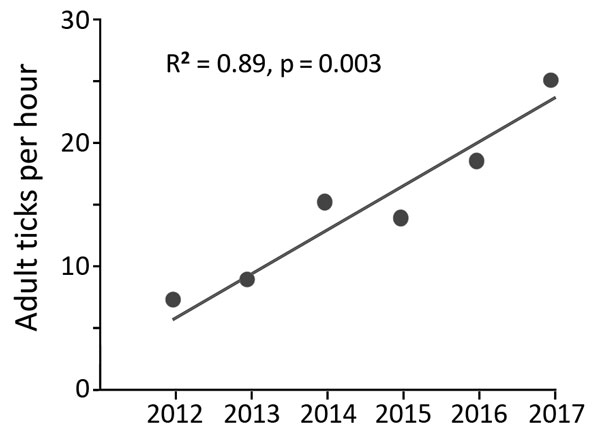Volume 24, Number 9—September 2018
Dispatch
Increasing Prevalence of Borrelia burgdorferi sensu stricto–Infected Blacklegged Ticks in Tennessee Valley, Tennessee, USA
Figure 2

Figure 2. Six-year trend in adult Ixodes scapularis tick counts at Forest Resources Research and Education Center (36.00°N, 84.22°W; elevation 298 m), Anderson County, Tennessee, USA, 2012−2017. We collected host-seeking I. scapularis adult ticks by drag-cloth sampling vegetation on a 1,050-m transect of mixed hardwood forest once each December.
Page created: August 15, 2018
Page updated: August 15, 2018
Page reviewed: August 15, 2018
The conclusions, findings, and opinions expressed by authors contributing to this journal do not necessarily reflect the official position of the U.S. Department of Health and Human Services, the Public Health Service, the Centers for Disease Control and Prevention, or the authors' affiliated institutions. Use of trade names is for identification only and does not imply endorsement by any of the groups named above.